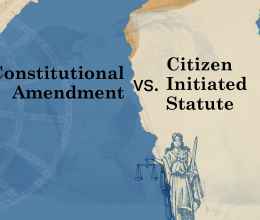Just over one year ago, many of us celebrated the passage of Issue 2, a citizen-initiated statute that legalized adult-use cannabis in Ohio. The ACLU of Ohio celebrated, too, primarily because of its role in stemming the tide of people into our criminal legal system for cannabis-related offenses and because of its explicit language seeking to address some of the many harms caused by the failed war on drugs. We believe that there are two necessary steps in cannabis policy: legalize and repair.
Now that we’ve legalized, it is critical that we keep our foot on the gas for “and repair.” The cornerstone to this step is Ohio’s Social Equity and Jobs Program, created in the Department of Development for the express purpose of remedying the harms resulting in the disproportionate enforcement of marijuana-related laws.1 Under current law, it is *supposed* to receive 36% of the 10% excise tax on adult-use cannabis sales.2 An excise tax is an additional tax on specific goods and services and, in this case, it’s the adult-use cannabis sold at Ohio’s dispensaries. In less than four months since adult-use cannabis sales went live, Ohio’s budding adult-use industry generated $191 million.
This means nearly $7 million should already be set aside in the Social Equity and Jobs Fund for initiatives such as:
- Providing financial assistance, loans, grants, and technical assistance to people certified under the Cannabis Social Equity and Jobs Program
- Studying and funding judicial and criminal justice reform
- Funding direct investment in disproportionately impacted communities to enhance education, entrepreneurism, legal aid, youth development, violence prevention, and the arts related to the program
Additional cannabis tax dollars are set aside for funds including a host community fund (36%)3 and a substance use and addiction fund (25%),4 among others. The question we’ve been asking ourselves at the ACLU of Ohio is, when and how will the State spend the millions of dollars already collected? Despite dollars flowing in, there does not appear to be any flowing out just yet. Our cautious optimism remains, but our skepticism grows with each monthly sales report touting the success of the budding industry
While such transformative funding is encouraging as we tackle the latter half of legalize and repair, the outlook is more precarious than it seems. Because Issue 2 was an initiated statute, lawmakers can change the law at any time. And, unfortunately, Issue 2 did not set a deadline for the Social Equity and Jobs Program to be up and running — leaving it vulnerable. As a result, a group of lawmakers have had this program in their crosshairs, proposing that the money is better spent on their own priorities such as policing, jails, and prisons. However, this isn’t what voters chose when they went to the polls last November and it’s not an investment in repairing the harms of the failed war on drugs. It is an affront to voters and the clearly-stated intent of the law and ought to be rejected as such.
As the 135th Ohio General Assembly wraps up this month, we’ll be keeping a close eye on legislation and administrative rules affecting the State’s adult-use cannabis laws, particularly those creating and governing the Social Equity and Jobs Program. We expect that the fight to preserve these important policies will extend well into the future and hope that you will join us in demanding that we legalize and repair.
1 R.C. 3780.18.
2 R.C. 3780.23(C)(1).
3 R.C. 3780.23(C)(2).
4 R.C. 3780.23(C)(3).








